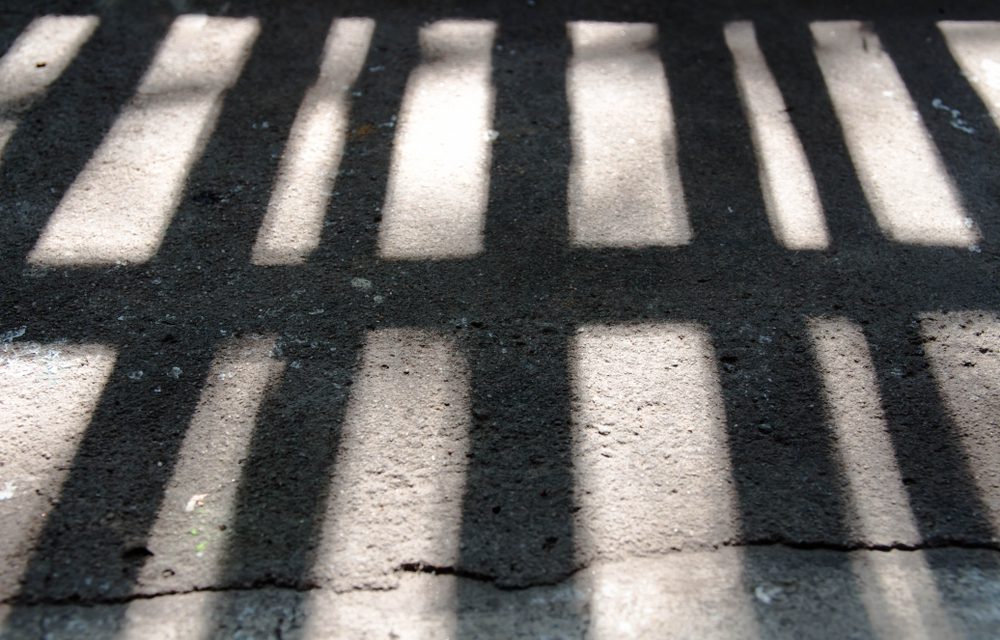West Texas is beautiful – expansive skies and open roads, cactus-studded desert as far as the eye can see with a backdrop of mountains. Puncturing the landscape around El Paso are several Immigration and Customs Enforcement (ICE) detention facilities, holding almost 4,000 non-citizens awaiting their fate. Some will face interviews with an Asylum Officer or an immigration court hearing. Others will be deported back to the very countries they fled. For over a year now, El Paso has been ground zero for the Trump Administration’s policy experiment of separating children from their parents at the U.S.-Mexico border.
Over the course of several days, my colleagues and I met with numerous separated mothers and fathers in ICE detention centers in the El Paso area. We were trying to get a sense of what was happening, to help inform our work with the Immigration Justice Campaign, an effort to mobilize attorneys nationwide to stand alongside immigrants in court.
Detention centers are crushing places. Every surface is cement and metal but for the panes of glass that separate attorneys from their clients. The experience of detention is designed to wear you down, to traumatize you, to make you give up. It can break you. Your skin turns grey due to malnutrition and lack of sunlight. The light in your eyes goes dim.
One father said, “We all cry every day.” His pain was palpable.
He had been separated from his young son at the border weeks ago. He did not know where his son was, and had not been able to speak with him since government officials wrenched his boy from his arms. His crying was muffled by the beating of a July downpour on the roof. His trembling hands took a tissue I jammed through the narrow slot in the plexiglass wall between us.
The government tore these children from their parents to exert maximum cruelty and suffering for the purposes of deterring future migrants from fleeing north. Of course, when a person is faced with the certainty of rape, torture, or death or the possibility of being separated from the child at the border, it’s a false choice. Parents will do anything to save their children.
Most of the parents had only spoken to their children once in the weeks since being separated (some not at all), some do not know where their children are, and none of them knew when they would see them again. Everyone I spoke with had gone before a criminal court judge after being advised by a federal defender that pleading guilty would mean they would see their children faster.
Parents are routinely coerced by ICE officers into signing deportation papers. The parents can choose to be deported alone, or with their child, or they can choose to fight their asylum case. Guards and ICE officers routinely tell the parents that if they insist on fighting for asylum, they will be detained for many months, they will not see their children that entire time, and when they lose, they will be deported immediately afterwards. Simply put, the government is holding thousands of immigrant children hostage.
None of the parents with whom we met had spoken to a lawyer until we arrived, and many of them had not received any legal orientation. Legal Orientation Programs (LOPs) provided “know your rights” presentations and workshops to about 8,000 of the estimated 33,000 non-citizens held in El Paso ICE detention centers last year.
The other thousands of men and women – and those in other detention centers around the country – are entirely alone, as they navigate their way through an increasingly hostile immigration system. Some of the ICE facilities are located in remote locations of West Texas, rendering them virtually impenetrable, and the availability of pro bono legal services are nearly nonexistent. Detainees must have money on their commissary accounts to make phone calls, which carry exorbitant fees charged by the private prison companies that run the jails. For detainees who receive negative decisions from the asylum office, the Immigration Judges generally prohibit them from testifying at their court review, guaranteeing that the negative decision will remain intact and the detainees are one step closer to deportation.
“When will I see my child again?” “Do I have a chance of getting out of here?” “Why are they doing this to us?” “What if I am deported?” The government has created this humanitarian crisis, yet has failed to provide information for those whose lives have been turned upside down.
A handful of the parents had already passed their fear interview before the Asylum Office, even though they had not been able to consult with an attorney beforehand. They were able to explain how their experiences added up to a “credible fear” of persecution in their home country. It’s an important step, but their journeys are just beginning – they have yet to convince an Immigration Judge that they merit asylum, an increasingly difficult feat to accomplish as the administration builds up the invisible wall, brick by brick, and ramps up the deportation machine.
Our community – advocates, lawyers, organizers, litigators – is working harder than ever before to push back against this administration’s unspeakably cruel policies. This collaboration has lit a match of hope in an otherwise dark abyss of misinformation and coercion by government officials. We are all huddled around the light, sharing insights and thinking of innovative ways to rise up and protect the vulnerable. While we don’t know what the future will hold, we do know that our work to fight these injustices is more important now than ever before, and we will not stop. We cannot stop fighting this injustice. Anything less would dishonor the courage and strength of the heroic parents who would go, and have gone, to the ends of the earth to protect their children.
***
For more information about the Immigration Justice Campaign, including how you can engage and volunteer, please go to www.immigrationjustice.us.







